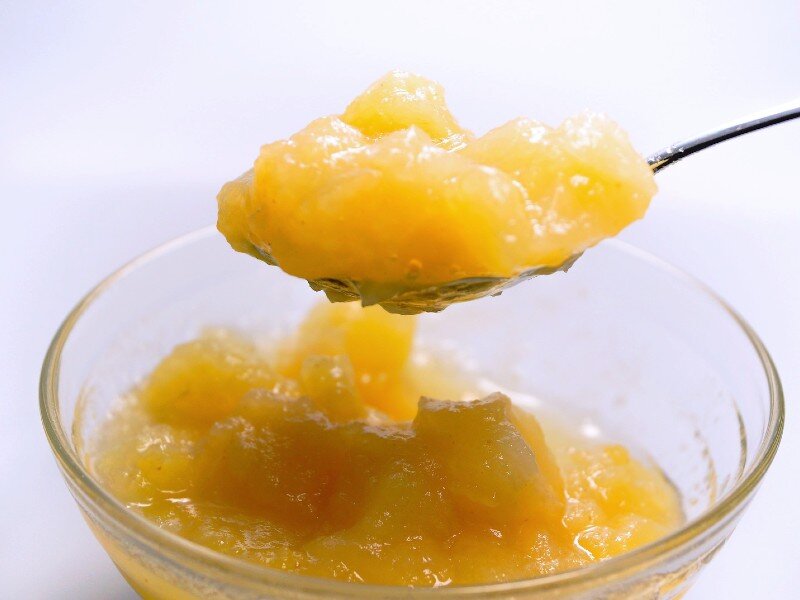Oil has always been one of the things that a lot of people are trying to substitute or avoid. May it be for health concerns or if you’ve just run out of it! There are several substitutes for oil that you can use in baking. Read on below to learn how you can make your next baked goods healthier!
If using any kind of fat is out of the picture, applesauce is the most commonly used substitute for oil in baking. It sounds crazy, yet applesauce gives similar results to baked products that used oil. Fruit puree, butter and cornstarch solution are also great oil substitutes.
What’s the purpose of oil in baking?
The main purpose of oil in baking is to provide moistness. It encapsulates the gasses that were released by the yeast or baking powder. At the same time, it slows down the gluten formation which makes light and fluffy baked goods. It also binds the ingredients together.
Another purpose of oil is to keep pastries fresh, by preventing them from drying out and crumbling easily. Oil plays a great role in baking, so replacing it should be done with a lot of care and thoughtfulness.
What are vegetable oils?
Vegetable oil is commonly used for baking because of its neutral flavour and high smoke point. This is also a broad term for many different kinds of plant-based oils like canola oil and avocado oil. The usual vegetable oils that are available in markets are made from either corn or soybean oil.
Plant-based products like these usually contain less cholesterol compared with other oils. If they aren’t available for you, instead of substituting vegetable oil, you can always try coconut oil, sunflower oil, peanut oil, or olive oil.
Why would you want to substitute oil?
Before looking for an oil substitute, let’s first discuss why you want to substitute it. There are a few reasons that you might want to bake without oil. That said, it’s mainly because of one thing: Calories.
Oil is believed to be the most calorie-dense food, as it comes at about 4000 calories per pound. Of course, nobody’s going to consume a pound of oil in one sitting, but you get the gist! People want more nutrients and fewer calories with their food more than ever these days. Oil does not have many nutrients and is high in saturated fat and cholesterol. That’s why many people like using substitutes like coconut oil which provides antioxidants.
Despite everything, a huge percentage of people looking for oil substitutes are the ones who just ran out of oil while baking. Whatever reasons you have, listed below are some of the things that you can use as oil replacements.
Oil substitutes
If using any type of oil is out of the picture for you and you still want to make bread or cakes, your best choices are these:
Applesauce
Applesauce is the most common substitute for oil in baking. Using it not only reduces calories and fat, but also adds moisture, nutrients, and fibre. It has a fairly neutral taste and sweetness, so it’s also great if you want to add another level of flavour too!

Here are some tips for doing it right every time:
- The unsweetened variant is the best one. But if you want to add some sweetness, you can use the sweetened variant. Just be mindful that you might want to tone down some of your sweet ingredients if you use a sweet one.
- The typical ratio for substituting applesauce for oil is 1:1. So if your recipe calls for 1/2 cup of oil, you’re going to need 1/2 cup of applesauce. This usually works great in making quick breads and muffins.
- Using applesauce will come with a bit of a change in texture. If your recipe calls for a lot of oil, you might want to test what ratio would work best for you. If your recipe calls for 2 cups of oil, you can first try using 1 cup of applesauce and 1 cup of oil (if you have any). You can then do the increments that would suit your desired end product best.
- Replacing oil with applesauce in baked goods will slow down the browning in the oven. So watch it in the oven to avoid overbaking. You can test for doneness with the help of a toothpick, or with the tap test.
Fruit Puree
If you don’t have any applesauce on hand, any fruit that’s been mashed or pureed will work fine as well! Fruits like bananas, pears, pumpkin, or even sweet potatoes can be used for this. The usual ratio is the same with applesauce, 1:1. But one size fits all doesn’t work when using this kind of replacement. It’s still best advised to start with half-and-half for this, half amount of oil and half amount of fruit puree. From there, you can slowly increase the ratio until you meet your desired end results.
Dairy products
Dairy products can also be a substitute for oil in baking. The most commonly-used dairy products for this are yoghurt, sour cream, and buttermilk. Yoghurt is a great substitute for oil in baking due to its high protein content and probiotics. Buttermilk is also very similar to yoghurt, but it contains lactic acid which adds a bit of tartness.
Dairy products may add moistness to your baked goods, but they will also alter the flavour a bit. So if you’re going to use it, you might have to adjust some of the other ingredients, or even add something that’s going to complement it.
Cornstarch solution
Cornstarch solution is another common substitute for oil when baking. While it won’t provide any nutritional value, it will produce something that’s comparable to the original. To do it, just mix cornstarch with water under heat until you get a consistency that’s not watery anymore. Adjust accordingly if your batter is likely sticky. After the mixture cools, it’s ready to use. However, it’s not recommended to substitute this in high-oil content recipes. It has a great probability of changing the consistency of your baked goods.
Some things to consider when substituting oil in bread
– Be mindful of a bit of difference in the texture and hint of flavour if you’re going to use some of these substitutes.
– Even if the usual ratio for most is 1:1, it’s always best advised to start everything slowly. Start with 1/2 of the oil content and 1/2 of the substitute first, and gradually increase from there.
– If you have concerns about the taste and texture of your baked goods, you can try adding some lemon juice or vinegar.
If you’ve enjoyed this article and wish to treat me to a coffee, you can by following the link below – Thanks x

Hi, I’m Gareth Busby, a baking coach, head baker and bread-baking fanatic! My aim is to use science, techniques and 15 years of baking experience to help you become a better baker.
Table of Contents
Related Recipes
Related Articles
Keep up to date with the latest Articles, Recipes & Bread Baking info by joining my mailing list
Join The Weekly Bread Baker's Newsletter!
Latest Articles
Baking Categories
Disclaimer
Address
8 Woodland Avenue,
Worthing
West Sussex
BN13 3AF
UK









